"Three mountains" of Nihonga (Japanese-style painting)
Kaii Higashiyama, Yasushi Sugiyama, and Matazo Kayama
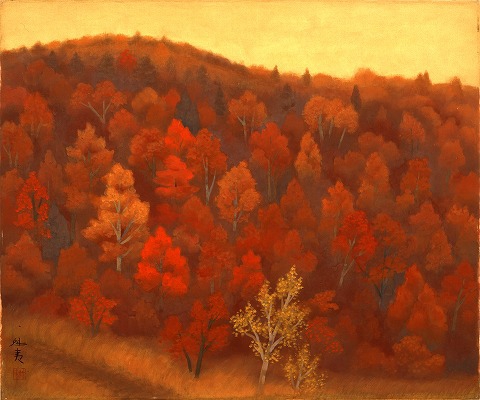
|
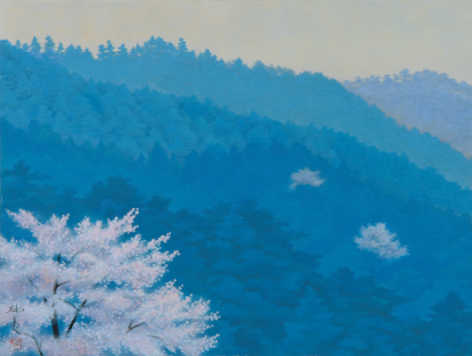
|
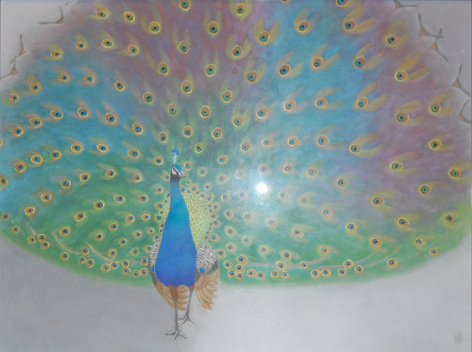
|
|
"KOEI" (Deep Red Reflection), Kaii Higashiyama, 48.1 x 58.5cm, color on silk |
SHUNGYO "Spring Dawn", Kaii Higashiyama, 46.5 x 61.0 cm, color on paper |
"KO" (Brilliance), Yasushi Sugiyama, 56.0 x 74.0 cm, color on canvas |

|
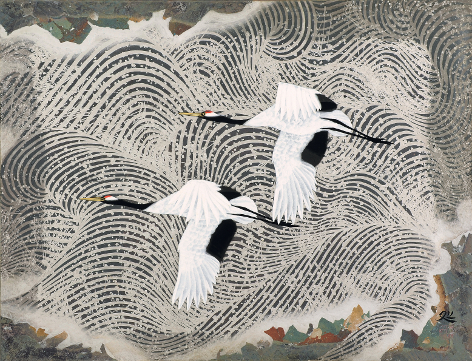
|
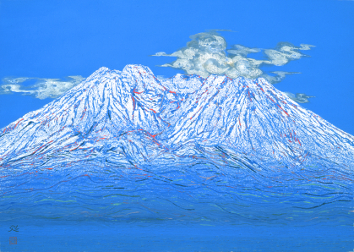
|
|
"KI" (Daybreak), Yasushi Sugiyama, 68.0 x 91.0 cm, on canvas |
"ZUISHO" (Auspicious Sign), Matazo Kayama, 50.2 x 65.1 cm, color on paper |
"YUKI SAKURAJIMA" (Sakurajima Covered in Snow), Matazo Kayama, 50.2 x 65.1 cm, color on paper |
Because of their rare talent and achievements as well as the common character in their names (yama, meaning mountain), Kaii Higashiyama, Yasushi Sugiyama, Tatsuo Takayama, Matazo Kayama and Ikuo Hirayama are known as the "five mountains" of Japanese painting, and continued to lead the Japanese art world until the 1990s. Out of the five, the Hori Art Museum exhibits works from Kaii Higashiyama, Yasushi Sugiyama, and Matazo Kayama.
Higashiyama was a landscape painter with national popularity. Sugiyama used his outstanding technique in sketching and modeling to pioneer new areas in Nihonga (Japanese-style painting). Kayama was a flag-bearer in Japanese art circles whose novel ideas and refined sensibility always gave the art world a breath of fresh air. These "three mountains" learned from each other constantly to create a new age of Nihonga.
Higashiyama was a landscape painter with national popularity. Sugiyama used his outstanding technique in sketching and modeling to pioneer new areas in Nihonga (Japanese-style painting). Kayama was a flag-bearer in Japanese art circles whose novel ideas and refined sensibility always gave the art world a breath of fresh air. These "three mountains" learned from each other constantly to create a new age of Nihonga.
Luminous ink paintings : The work of Koichiro Kondo

|
| "HYAKUSHUNZU" (Hundred Fleet Horses), Koichiro Kondo, 1930, 181 x 378 cm, ink-wash on paper, twin 6-folded |
Koichiro Kondo created a unique light in his ink-wash paintings, and he left his mark in the history of Japanese modern art. His work was well-regarded by the writer Ryunosuke Akutagawa as "smelling of meat from somewhere (i.e. having an intensely visceral quality)", and was in time recognized by the Nihonga artist, Taikan Yokoyama. He continued creating energetic works even during the war years, and until his death he explored a diverse range of the painting styles, and is held in high esteem.
"HYAKUSHUNZU" on exhibit here was a wedding present for Prince Takamatsu in 1931, and is a representative work of Kondo.
"HYAKUSHUNZU" on exhibit here was a wedding present for Prince Takamatsu in 1931, and is a representative work of Kondo.




